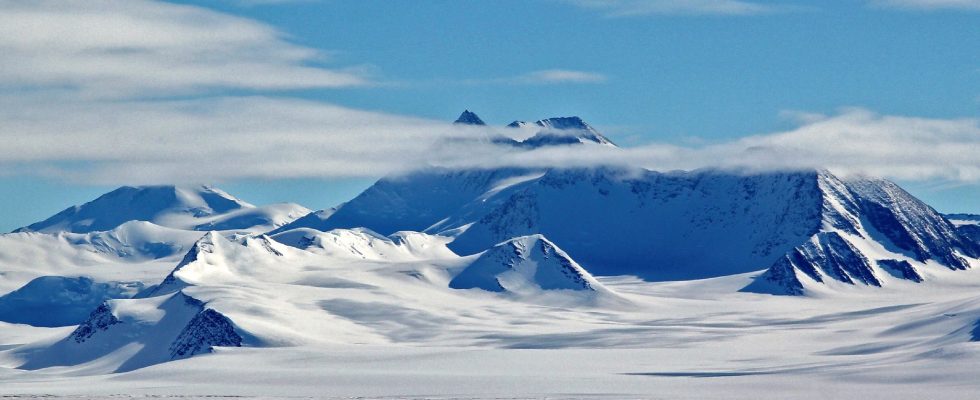Is the Antarctic sea ice tipping into the unknown? For a long time, this part of the globe seemed to escape climate change: the observations of scientists had shown a regular growth of sea ice over the past forty years, unlike the Arctic sea ice (at the North Pole) which is constantly shrinking. .
“Unlike the Arctic, where the trends related to climate change are very clear and where we have seen sea ice losses over the past two decades, the evolution of ice in Antarctica remained more mysterious. in 2016 there was no drop in the sea ice surface, and then, suddenly, we saw a rapid decline in sea ice, without clear explanations for the moment”, confides Zachary Labe, researcher in oceanology from Princeton University, USA.
Since then, the Antarctic sea ice has continued to decrease. Until reaching levels of decline never recorded. In March and February the continent broke two records in quick succession, with Antarctic sea ice reaching its second lowest level for a month of March in 45 years. Above all, this phenomenon of melting is accelerating. While in the North, the extent of Arctic sea ice was 4% below average in March, Antarctic sea ice was 28% below average, noted the Copernicus climate change observatory.
“The region is in turn undergoing strong changes”
The anomalies noted this week confirm this acceleration, notes Zachary Labe. “The amount of sea ice missing from the average now stands at more than two and a half million square kilometers, which is the largest anomaly ever recorded in our satellite observations.”
Difficult for the moment to explain the reasons for this decrease in glaciation in the South Pole. The scientists, who still have relatively recent data on this continent which is particularly difficult to access, evoke the complexity of the relationship between the warming of the oceans and the evolution of the sea ice, but also underline the role of climate change. The El Niño phenomenon, generally associated with an increase in global temperatures, coupled with the effects of global warming caused by human activity, could also play a role.
“The Antarctic region is one of the rare regions which was preserved from the effects of global warming, and what this seems to tell us is that this is no longer the case. The region is in turn undergoing major changes”, evokes with scientific caution Jean-Baptiste Sallée, oceanographer and climatologist at the CNRS, who participated in writing the IPCC report. “The models show us that in a world impacted by climate change, the Antarctic sea ice will also undergo effects and experience a retreat. Are we passing that point, it is the question that we ask ourselves”, completes the scientist.
Destabilization of the ice sheet
Climatologist Christophe Cassou describes these differences in the dynamics of melting and reformation of the sea ice as a potential climatic “black swan”. Consider an event with a very low probability, but with potentially catastrophic consequences. “Low-probability but high-risk, record-breaking contingencies will multiply with each additional increment in temperature,” he noted in a tweet.
With these new extremes, the world is also entering the unknown. What will be the consequences of such a rapid melting of the South Pole sea ice? “Antarctica acts as a planetary thermostat. A permanent retreat of the sea ice would have multiple effects on the climate, with potentially more heat accumulation on the surface. The melting of this ice could also destabilize the ice cap of the continent and accelerate the rise in sea level”, says Jean-Baptiste Sallée.
Cascading records
These anomalies are also to be compared with other records broken elsewhere on the globe. In recent months, several temperature readings have shown an overheated planet. Very recently, on Tuesday July 4, the American Oceanographic Administration NOAA noted an average air temperature on the surface of the planet of 17.18°C, clearly exceeding the 17.01°C measured the day before and which was already beating with a significant margin over the previous daily record (16.92°C) set on August 14, 2016 and repeated on July 24, 2022. In addition, between the months of March and May, the average temperature at the surface of the oceans reached an all-time high in 174 years of measurements, exceeding the 20th century average by 0.83°C, according to NOAA data. Anomalies considered “never seen” by scientists.
Such measures had already been anticipated in a study published in 2021 in the scientific journal Nature Climate Change. The authors of this study on the increase in the probability of extreme climatic records, thus noted that in scenarios with high greenhouse gas emissions “extreme heat spread over a week and breaking records by deviations two to three, are two to seven times more likely in 2021-2050 and three to 21 times more likely in 2051-2080, compared to the past three decades.” The scientists thus noted that this type of event, by considering only past records, could then be considered very highly improbable, and constantly underestimated in the risk assessment.
